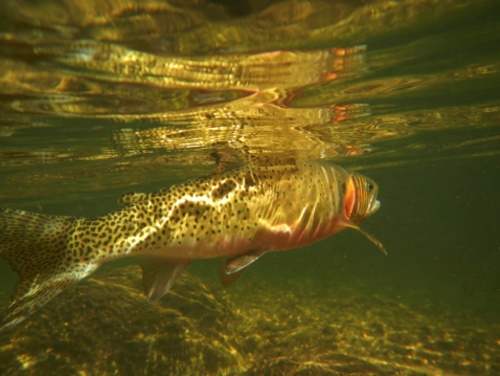
On September 26, 2019, the U.S. District Court for the District of Colorado vacated and remanded in part the U.S. Fish and Wildlife Service’s (Service) 2014 determination that listing the Rio Grande cutthroat trout (Oncorhynchus clarki virginalis) under the Endangered Species Act (ESA) was not warranted.
The Rio Grande cutthroat trout is native to high-altitude streams in southern Colorado and New Mexico. In 2008, the Service determined that the Rio Grande cutthroat trout warranted listing as an endangered or threatened species, although listing was precluded by other higher priority listing actions. In evaluating the viability of trout populations, the Service found that only eight populations were “secure,” based on (1) stream length, (2) absence of non-native fish, and (3) population size of at least 2,500 Rio Grande cutthroat trout.
In 2014, the Service determined that listing the Rio Grande cutthroat trout was no longer warranted. Plaintiff Center for Biological Diversity challenged that decision. In contrast with the 2008 determination, the Service estimated that there were 55 populations in “best” or “good” condition, including some populations with fewer than 2,500 fish and as low as 501 fish. The court opined that the administrative record for the Service’s decision did not explain why the Service had apparently lowered its standards for identifying healthy trout populations from its 2008 standards. The court remanded the 2014 determination back to the Service for an explanation of the criteria used to calculate healthy trout populations, following F.C.C. v. Fox Television Stations Inc., 556 U.S. 502, 515 (2009), which held that an agency must provide a detailed justification for a new policy when it “rests upon factual findings that contradict those which underlay its prior policy.”
The Service’s 2014 determination was affirmed in all other respects. The court held that the Service was not required to analyze each of the five statutory factors that govern whether listing of a species under the ESA is appropriate expressly and in seriatim, where the Service addressed the factors holistically as part of its broader analysis, and correlated the risk factors it was considering to the statutory factors. (Section 4 of the ESA provides that a species may be listed based on (1) present or threatened destruction or curtailment of habitat; (2) overutilization for commercial and recreational purposes; (3) disease or predation; (4) the adequacy of existing regulatory mechanisms, and (5) other natural and man-made factors affecting the species. 16 U.S.C. § 1533(a)(1)(A)–(E).)
Nossaman represented the New Mexico Department of Game and Fish as an Intervenor-Defendant in this action.
Nossaman’s Endangered Species Law & Policy blog focuses on news, events, and policies affecting endangered species issues in California and throughout the United States. Topics include listing and critical habitat decisions, conservation and recovery planning, inter-agency consultation, and related developments in law, policy, and science. We also inform readers about regulatory and legislative developments, as well as key court decisions.
Stay Connected
 RSS Feed
RSS Feed
Categories
- Alternative Energy
- Bald and Golden Eagle Protection Act
- Budget
- CEQA
- CESA
- Climate Change
- Congress
- Conservation
- Construction Projects
- Consultation
- Continuing Education
- Court Decisions
- Critical Habitat
- Delisting
- Endangered Species Act
- Event
- Fish & Wildlife Service
- Freedom of Information Act
- Government Administration
- Legal
- Legislation
- Listing
- Litigation
- Migratory Bird
- National Marine Fisheries Service
- NEPA
- Off Shore Wind
- Pacific Northwest
- project
- Publications
- Regulatory Reform
- Sacramento-San Joaquin Delta
- SEPA
- Speaking Engagements
- Supreme Court
- Texas
- Timberland
- Water Issues
